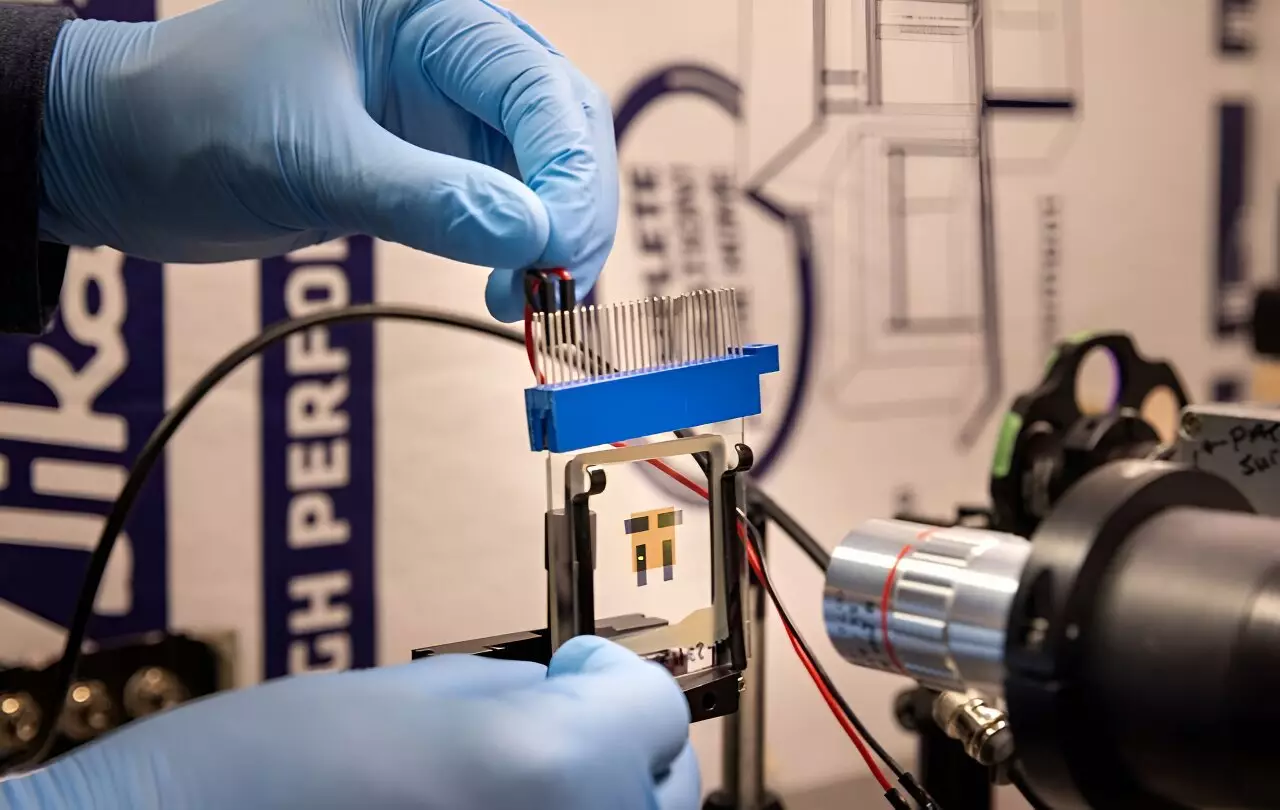Recent advancements in organic light-emitting diode (OLED) technology, spearheaded by researchers from the University of Michigan, have the potential to transform night vision systems. Traditionally dependent on cumbersome and heavy goggles, the new approach promises a more streamlined, effective, and cost-friendly alternative in the form of lightweight glasses. This shift is made possible by a significant rethinking of how infrared light is utilized, as articulated in their findings published in the esteemed journal, Nature Photonics.
The heart of the innovation lies in the unique behavior of the newly developed OLEDs that utilize a minimalistic design, significantly different from existing night vision solutions, which rely on image intensifiers. These current systems, albeit effective, involve complex mechanisms that magnify incoming near-infrared light. The process is intricate, involving the transformation of light into electrons, which are then accelerated and multiplied through a series of interactions within a vacuum chamber, before finally being transformed into visible light on a phosphor screen. This laborious method results in an amplification of around 10,000 times.
However, the newly engineered OLED operates differently, converting near-infrared light into visible light with an amplification factor exceeding 100, while eschewing the weight, high voltage, and bulkiness of traditional systems. This innovative design, articulated by Chris Giebink, a lead professor in electrical and computer engineering and physics, boasts extraordinary thinness — less than one micron thick, a significant leap over conventional methods that utilize materials tens of microns thick.
Reducing Power Consumption
Another notable advancement is the OLED device’s efficiency in power consumption. Operating at lower voltages reduces the energy needed for functionality, directly translating into enhanced battery performance for wearable devices. Battery longevity is crucial for users who rely on night vision technology over extended periods, such as military and security personnel. The device integrates a photon-absorbing layer that captures infrared light, generating electrons that subsequently produce visible light photons within a meticulously designed five-layer OLED stack. The synergy of these components fosters a positive feedback loop, generating up to five output photons for every input electron — a feature traditional OLEDs lacked.
Raju Lampande, the leading author of the study, emphasized that this technology represents the first demonstration of substantial photon gain within a thin film device, challenging the established norms of previous generations of OLEDs that offered one-to-one photon output.
Memory Functionality in Vision Systems
Equally fascinating is the OLED’s ability to exhibit memory behavior, a characteristic known as hysteresis. Unlike standard upconversion OLEDs that cease to function immediately upon the removal of light sources, this device retains an imprint of previous illuminations. Giebink noted that this “stickiness” of light output possesses intriguing implications for future applications, encapsulating a nuanced aspect of human visual processing directly within the technology.
The integration of a memory-like function presents a foundation for creating intelligent systems that can interpret and analyze visual information akin to human perception. As biological neurons interact based on historical input, so too can these OLEDs potentially offer advanced image processing capabilities without necessitating external computational resources.
The researchers’ use of readily available materials and established manufacturing methods further enhances the attractiveness of this technology. By maintaining cost-effectiveness and scalability, the potential applications of these advanced OLEDs extend beyond night vision glasses into sectors like robotics, healthcare, and autonomous vehicle systems.
The synthesis of high photon gain and memory behavior in the thin OLED devices outlines an innovative frontier in night vision technology. By delivering solutions that are lighter, more efficient, and capable of advanced processing, this research stands to not only replace outdated night vision adaptations but also to redefine expectations for electronic visual systems. As research continues to unfold, the integration of these features may foster a new era where human-like processing is merged seamlessly into artificial vision, creating devices that are not only functionality-driven but also smarter, enhancing the user experience across various disciplines. This breakthrough signifies a paradigm shift, showcasing the pivotal role that OLED technology could play in the future of optoelectronics.

